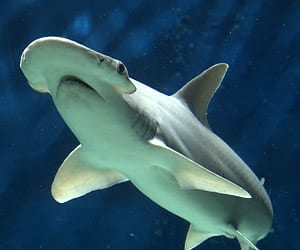Did humans evolve from the apes?
 Today, one can think of the apes and humans as cousins. They have common ancestors, but have not descended directly from each other. About 5-7 million years ago, a line of man-like apes grew apart, and evolved independently of the other apes. The oldest, almost completely intact skeleton of an upright ancestor of human – the Australopithecus - was found in 1974 in Ethiopia (Africa). The scientists named it ‘Lucy’.
Today, one can think of the apes and humans as cousins. They have common ancestors, but have not descended directly from each other. About 5-7 million years ago, a line of man-like apes grew apart, and evolved independently of the other apes. The oldest, almost completely intact skeleton of an upright ancestor of human – the Australopithecus - was found in 1974 in Ethiopia (Africa). The scientists named it ‘Lucy’.
 Biologists classify humans as animals and part of the animal kingdom. Like our nearest relatives, the apes, humans are also mammals. Humans have evolved from apes, but there are features that differentiate us from other animals—including apes. These include the upright walk, our opposable thumb, our special ability to communicate by a language, and our highly developed brain. Our brain allowed our ancestors, like the Neanderthals, to invent tools.
Biologists classify humans as animals and part of the animal kingdom. Like our nearest relatives, the apes, humans are also mammals. Humans have evolved from apes, but there are features that differentiate us from other animals—including apes. These include the upright walk, our opposable thumb, our special ability to communicate by a language, and our highly developed brain. Our brain allowed our ancestors, like the Neanderthals, to invent tools.

 Most of the sea animals that can be dangerous to us are too timid to attack humans. These include the dangerous-looking reef shark and the sea snake. Although a number of fishermen die from the poisonous bite of the sea snake, the animal itself is usually too lazy to bite. Another dangerous inhabitant of the sea is the puffer fish. Some of its body parts are highly poisonous, especially the liver and ovaries. Despite this, its meat is served as a delicacy and a few people have also died because of eating incorrectly cooked puffer fish. The sea wasp is one of the most poisonous animals of the world. The stinging cells of this species of jellyfish contain a poison which can cause death within minutes. Annually, up to 70 people die because of sea wasp stings.
Most of the sea animals that can be dangerous to us are too timid to attack humans. These include the dangerous-looking reef shark and the sea snake. Although a number of fishermen die from the poisonous bite of the sea snake, the animal itself is usually too lazy to bite. Another dangerous inhabitant of the sea is the puffer fish. Some of its body parts are highly poisonous, especially the liver and ovaries. Despite this, its meat is served as a delicacy and a few people have also died because of eating incorrectly cooked puffer fish. The sea wasp is one of the most poisonous animals of the world. The stinging cells of this species of jellyfish contain a poison which can cause death within minutes. Annually, up to 70 people die because of sea wasp stings.  The sea turtles developed from land turtles about 200 million years ago. Their legs transformed into broad fins and the armour gradually acquired a streamlined shape to generate less resistance while diving. Due to its flat armour, the animals cannot retract the head when it senses danger. Sea turtles spend their whole life in the sea and go on land only for laying eggs. The female turtles dig a hole in the sand with their flippers, lay the eggs in the whole (nest), re-fill the nest with sand and then return to the ocean. Hatching usually takes place at night, when there is a lesser chance of predators like seagulls being around. Once the young ones reach the surface, they instinctively head towards the sea.
The sea turtles developed from land turtles about 200 million years ago. Their legs transformed into broad fins and the armour gradually acquired a streamlined shape to generate less resistance while diving. Due to its flat armour, the animals cannot retract the head when it senses danger. Sea turtles spend their whole life in the sea and go on land only for laying eggs. The female turtles dig a hole in the sand with their flippers, lay the eggs in the whole (nest), re-fill the nest with sand and then return to the ocean. Hatching usually takes place at night, when there is a lesser chance of predators like seagulls being around. Once the young ones reach the surface, they instinctively head towards the sea.



 Fish move by flapping their fins or through wriggling movements of their body. In addition, they have an air bladder, which they can fill with gases when needed. These features make them lighter and they can float in the water like a submarine. Jellyfish usually drift. To move forward, they pull together their cap and push the water downwards—a same recoil principle that is used in jet fighters and octopuses.
Fish move by flapping their fins or through wriggling movements of their body. In addition, they have an air bladder, which they can fill with gases when needed. These features make them lighter and they can float in the water like a submarine. Jellyfish usually drift. To move forward, they pull together their cap and push the water downwards—a same recoil principle that is used in jet fighters and octopuses.